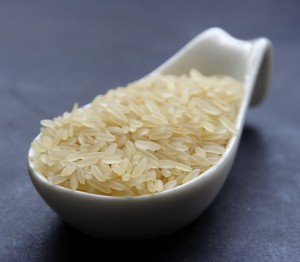 The magazine Consumer Reports released a study last month that revealed low levels of arsenic – a chemical element that is toxic when consumed in higher doses – in rice and rice products grown across the world.
The magazine Consumer Reports released a study last month that revealed low levels of arsenic – a chemical element that is toxic when consumed in higher doses – in rice and rice products grown across the world.
The study tested 223 types of rice and rice products – such as rice-based cereals and rice milk – purchased in the United States in April, May and August of this year. It found arsenic in every product it tested, and dangerous levels of inorganic arsenic in dozens of products. Consumer Reports the story points out that their study is “a spot check of the market and “too limited to offer general conclusions about arsenic levels in specific brands within/across rice product categories.” Nevertheless, their article raises some surprising questions about toxins in our food supply.
Following the Consumer Reports study, the U.S. Food and Drug Administration released some preliminary results of a long-term study on arsenic levels in our food supply. Their study found levels of arsenic in rice similar to the Consumer Reports study.
So, what’s a rice-lover to do? Consumer Reports recommends limiting consumption of rice and rice products, while the FDA is not recommending any limits on rice consumption.
Since the FDA and Consumers Reports found the same level of arsenic in food, the question in my mind is: Exactly how dangerous is low-level exposure to arsenic? A search of systematic reviews yielded some interesting results.
- One meta-analysis found consuming arsenic in drinking water is associated with a higher risk of lung cancer.
- Another analysis found chronic arsenic exposure can lead to mental retardation and developmental disabilities such as physical, cognitive, psychological, sensory and speech impairments – although in higher levels that measured in the rice products tested by Consumer Reports and the FDA.
- Other analyses found inconclusive results on the relationship between arsenic exposure and diabetes and arsenic exposure and cardiovascular disease – although both of these reviews identified limitations in the study methodology and called for additional research.
My plan is to think more carefully about the rice products my family consumes. I’m not going to throw out the brown rice in my pantry, and we will still enjoy stir fry and sushi on a regular basis. But I certainly plan to steer way from rice cereals and other rice products at the grocery store.



I thought it was cyanide in apple seeds?
Any evidence of old orchard land causing arsenic to reside in milk from cows pastured there?
This angers me. We need to know about this. Why are there “acceptable levels” of arsenic? Arsenic is found in apple seeds, which explains finding it in apple juice. Peach pits also contain arsenic. Someone tell me if arsenic is something naturally found in other foods and why this isn’t dangerous. I’ve eaten tons of rice in my lifetime and this is the first I’ve heard of ‘dangerous’ arsenic levels.